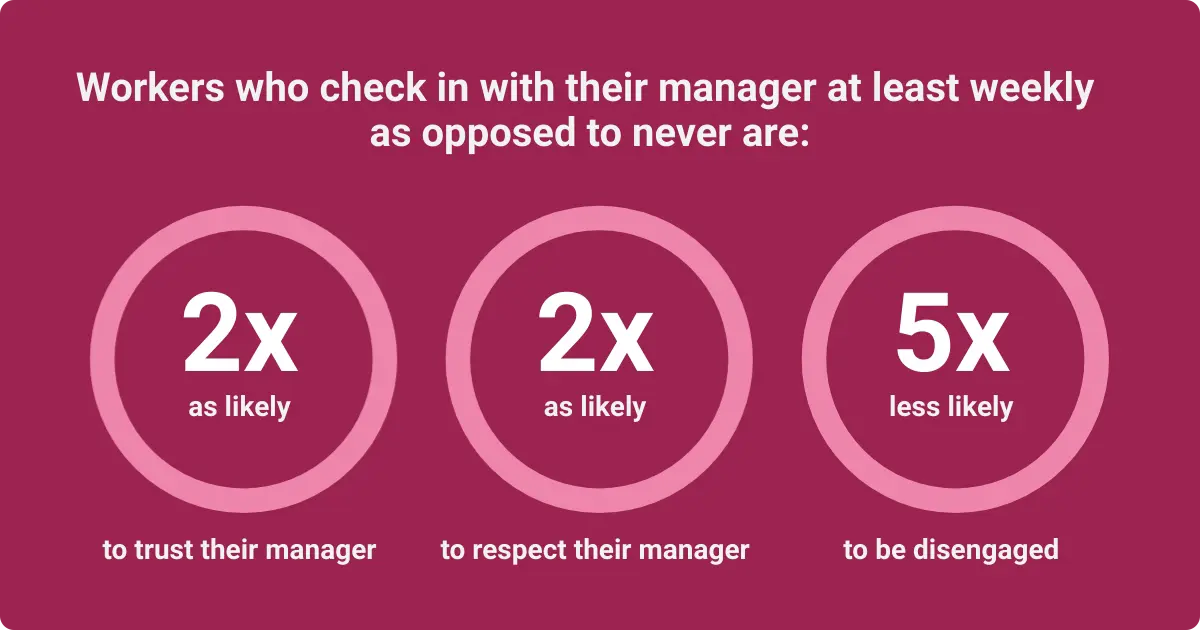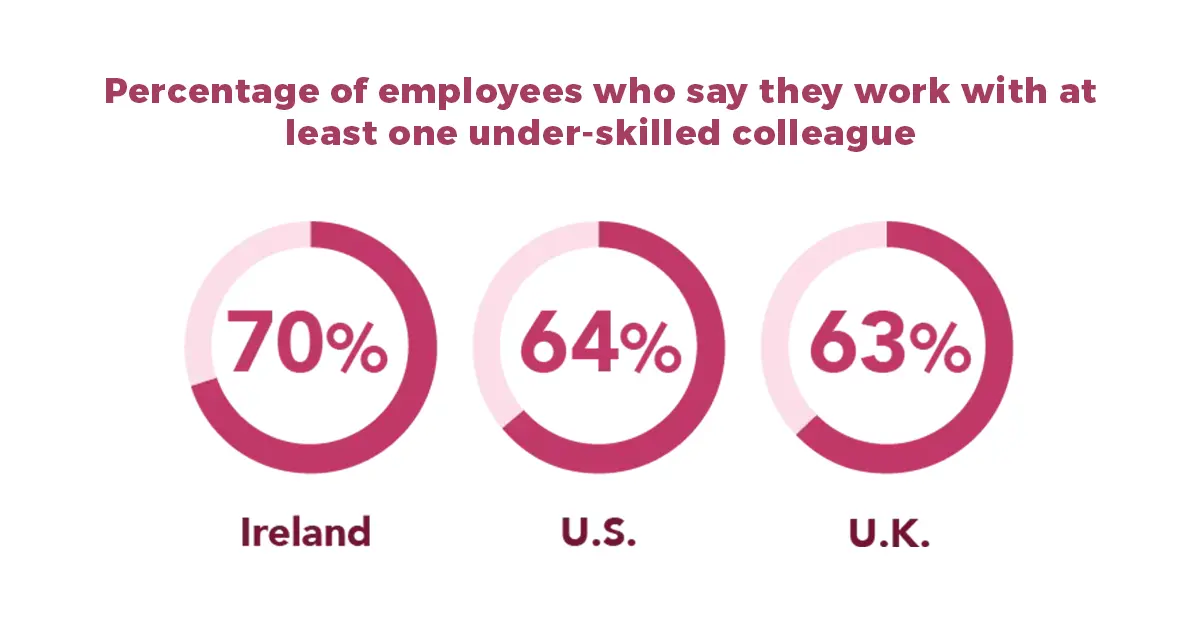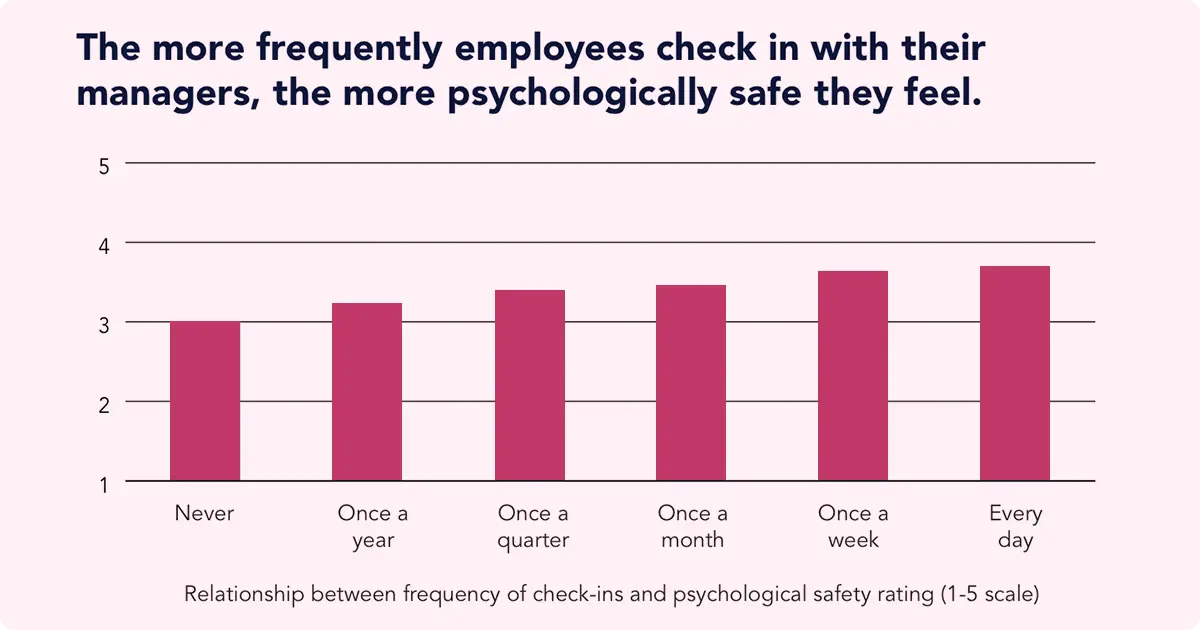7 Best Team Effectiveness Models in 2025

Poor teamwork costs organizationsOpens in a new tab about $16,491 annually per manager. For a company with 1,000 employees, that adds up to a staggering $874,000 a year.
Ineffective teamwork isn't just costly, it takes a toll on your employees. People stuck in bad teams can experience low morale and collaboration overload, leaving them overwhelmed and burned out.
Businesses need teams and collaborations to run successfully. Many projects are too complicated for one person. So, how can organizations better support their teams?
Enter: team effectiveness models. These frameworks help you develop stronger, more innovative teams. Let's talk through seven popular models, their benefits, and tips for applying them.
What are the benefits of team effectiveness?
Let’s be honest: Most teams aren’t exactly well-oiled machines. But if you’ve gotten by with less-than-stellar collaborations, you might wonder, as long as the work gets done, does it matter if everyone gets along?
The answer is yes, absolutely. Developing effective teams has significant financial and interpersonal benefits for organizations. Here are four reasons to make investing in team building a top priority.
Increased team performance and efficiency
It’s no secret that poor teamwork impacts performance. A 2023 survey by the Institute of Collaborative Working Behaviors Special Interest Group on the Cost of Ineffective Collaboration Behaviors found that ineffective collaboration delayed projects by an average of 30%. It also increased the work hours per project by an astonishing 38%.
Improving collaboration is one of the most effective ways to boost productivity. Highly effective teams communicate clearly and have common goals, allowing them to work faster. They also handle their responsibilities while supporting each other as needed. The result? Better work and fewer missed deadlines.
Improved team problem-solving
As the old saying goes, “Two heads are better than one.” That’s especially true when it comes to solving complex business problems. Collaboration and activities for problem solving bring together employees with diverse backgrounds and expertise to unlock innovative solutions.
Better communication and work relationships
Nothing damages a working relationship faster than a bad collaboration. When team members can’t work together effectively, resentment builds quickly. In the worst-case scenario, employees may spend more time arguing than actually working on the project.
Improving team dynamics helps your employees maintain positive relationships so managers don’t have to waste time refereeing. Effective groups also communicate more efficiently, reducing confusion and costly mistakes.
Enhanced employee experience and job satisfaction
Teamwork is a critical part of the employee experience. Workhuman research found that 73% of employees who work in teams report positive work experiences, compared to just 61% of solo workers. By fostering successful collaborations, you can help your team feel more satisfied.

7 popular team effectiveness models with examples
There’s no one-size-fits-all approach to developing effective teams. What works for one group of employees may leave another feeling disengaged or spark fierce arguments.
Luckily, there are many team-building models to choose from. These frameworks help organizations understand how to develop and optimize high-performing teams.
The best models depend on company culture, industry, and team dynamics. Here are some of the most widely recognized and effective:
- Tuckman’s Model
- Lencioni’s Five Dysfunctions
- The GRPI Model
- Hackman’s Model
- Katzenbach & Smith Model
- Google’s Project Aristotle
- The Drexler/Sibbet Model
Summary: Which model should you choose?
- For new teams: Tuckman’s Model, Drexler/Sibbet
- For dysfunctional teams: Lencioni’s Five Dysfunctions
- For teams struggling with clarity & roles: GRPI
- For long-term high performance: Hackman’s Model
- For organizations transitioning to team-based work: Katzenbach & Smith
- For trust & communication: Google’s Project Aristotle
- For structured team development: Drexler/Sibbet
1. Tuckman’s Team Development Model
In the 1960s, psychologist Bruce Tuckman created a model to explain how teams grow and evolve. According to his framework, all groups go through five predictable stages of development:
- Forming: The team assembles, and members look to the leader for guidance. At this stage, employees typically seek acceptance and avoid rocking the boat.
- Storming: When the team delegates tasks, conflicts and power struggles emerge.
- Norming: Team members develop shared processes and learn to trust each other. The leader helps build cohesion and encourages employees to share ideas.
- Performing: Team members work interdependently, providing support and exchanging knowledge.
- Adjourning: Employees may feel sadness or relief as the project wraps up.
This framework is highly effective because it provides a clear roadmap for team evolution. Understanding these phases helps team members measure their progress (or lack of it) and improve their long-term performance.
The Tuckman Model frames conflict as a natural part of team growth, not a failure. It's all about “the group vs. the problem," not “me vs. the group." This mindset can motivate members to work through disagreements instead of throwing in the towel.
Plus, this model empowers leaders to guide teams through different phases. During Storming, for instance, managers can anticipate conflicts and manage them proactively. In Norming, they can build cohesion by encouraging members to share constructive feedback and make joint decisions.
The Tuckman model is best suited for:
- Newly formed teams needing a roadmap for development
- Project-based teams on tight deadlines
- Leaders who need to manage evolving team conflicts
Tuckman Model case study
In preparation for launching a new AI product, a software firm assembled a team of developers and product managers. However, most of the members had never worked together before. Immediately, they started fighting about the project’s goals and struggling to communicate.
The manager used the Tuckman Model to help the team collaborate and navigate obstacles more effectively. During the Forming stage, for instance, the team held an onboarding session to discuss roles and expectations. When new conflicts about project scope arose in the Storming phase, open discussions helped the team reach a resolution.
The Norming stage empowered the team to establish clear communication rules and workflows. Once they moved to Performing, productivity soared, and the team actually delivered their AI product ahead of schedule.
2. Lencioni’s Five Dysfunctions of a Team
Business consultant Patrick Lencioni published “The Five Dysfunctions of a Team” in 2002. This book identifies five “dysfunctions,” or issues, preventing teams from reaching their full potential.
These dysfunctions include:
- Absence of trust: Team members are afraid to admit their mistakes or ask for help. They may also assume others have bad intentions.
- Fear of conflict: Dysfunctional teams refuse to discuss controversial topics or question decisions, even when they experience challenges.
- Lack of commitment: This occurs when individuals believe their ideas aren’t valued and disengage from the group.
- Avoidance of accountability: Team members who don’t buy into the project may deliver low-quality work or miss deadlines.
- Inattention to results: Employees focus on their personal goals instead of striving for collective success.
It’s easy to label a team as “bad” or “toxic,” but it’s not always clear why. Lencioni’s model helps leaders identify the root causes of poor teamwork, especially in high-pressure environments. It also reveals interpersonal dynamics that harm team performance. For example, an employee who hides a critical mistake could delay an entire project – and infuriate their collaborators.
But it’s not just about pointing out dysfunctional behavior. This team effectiveness model also provides practical resources for improving team culture. Get started by having your employees complete the Online Team AssessmentOpens in a new tab.
Lencioni’s model works best for:
- Dysfunctional teams struggling with accountability, commitment, or trust
- Executive leadership teams that avoid conflict or disagree on key values
- Organizations with weak collaboration
Lencioni Model case study
A healthcare startup’s leadership team was struggling to grow. The members mistrusted each other, and two executives derailed every meeting with petty arguments. These conflicts led to a string of poor decisions, fueling the frustration.
The group agreed to use the Lencioni model to address their destructive dynamics. They started by conducting a team assessment, which revealed low trust and fear of conflict. To address these issues, they scheduled regular open-dialogue meetings and participated in vulnerability-based trust exercises. They also created clear accountability measures to keep everyone on the same page.
This approach reduced conflict avoidance by empowering team members to voice their opinions. It also improved decision-making and strengthened their commitment to the company’s goals.
3. The GRPI Model
In 1972, Richard Beckhard introduced the GRPI (sometimes spelled GRIP) model. According to this model, effective teams require four components:
- Goals: Team members must unite around the same goal
- Roles: Everyone understands their individual responsibilities
- Processes: Teams must have clear workflows and communication norms
- Interpersonal: Members have strong relationships and trust each other
This model prioritizes team goal setting, ensuring that everyone’s on the same page before they start working. It helps prevent confusion and misalignment, which often occur in complex teams.
The GRPI Model is best suited for:
- Teams with unclear responsibilities and workflow inefficiencies
- Cross-functional or hybrid teams needing structured collaboration
- Organizations going through rapid changes or restructuring
GRPI Model case study
A multinational marketing team was launching an ambitious social media campaign. They planned to share content across several platforms but disagreed on their goals. The marketers also didn’t understand their responsibilities, leading to project delays.
The team used the GRPI method to get back on track. Members created two shared objectives: raise brand awareness and generate leads. They also delegated clear responsibilities to each team member, scheduled weekly check-ins, and used Trello to manage the project. Finally, they used good team-building activities to improve collaboration.

The outcome? They launched their campaign on their new schedule and exceeded their engagement targets. Team morale also significantly improved, leaving everyone excited for the next project.
4. Hackman’s Five Conditions for Team Effectiveness
The psychologist Richard Hackman identified five conditions for a team’s success:
- Teams must be real, which means members rely on each other and have stable roles.
- Members have clear and motivating goals, giving them a compelling direction.
- They have the right people with diverse personalities and the necessary team skills.
- The organization provides the resources and leadership needed to excel.
- The team’s leadership offers expert coaching to support each member’s growth.
Hackman’s model is effective because it balances interpersonal and structural factors. It highlights the importance of combining the right structure with leadership support and other resources. For example, an organization may provide one-on-one coaching to close the skills gap. Plus, this approach focuses on long-term sustainability and effectiveness rather than short-term successes.
Hackman’s five conditions are best suited for:
- Leaders designing high-impact, strategic teams
- Organizations looking to build a strong team culture from the ground up
- Companies struggling to structure or engage teams
Hackman’s Model case study
A global consulting firm was working on a high-stakes client project that required knowledge of AI. However, the team didn’t have a clear direction, and many members didn’t have the necessary AI skills.
Following Hackman’s model, the team’s leader created a clear structure and developed a client-focused mission. They also brought in new members who were well-versed in AI. Additionally, the organization provided much-needed support by offering executive sponsorship and assigning a senior mentor to guide the team.
These changes allowed the team to deliver a successful project ahead of schedule. Delighted, the client gave the firm a long-term contract.
5. The Katzenbach and Smith Team Performance Model
In 1993, business consultants Jon Katzenbach and Douglas Smith introduced a new team performance model, categorizing collaborations into three types:
- Working groups: Individuals who share ideas and practices but don’t create collaborative outputs are not true teams, just people who occasionally interact.
- Real teams: People with complementary skills actively work together to achieve common goals.
- High-performing teams: These groups have a significant collaborative impact and support each member’s personal development.
This performance model helps businesses measure their team’s effectiveness. For example, a group may meet deadlines but complete tasks independently, so they’re not a true team. In turn, without mutual support, a real team can’t reach the highest level of performance.
Katzenbach and Smith’s framework addresses these issues by promoting collective accountability and shared purposes. It helps organizations transform working groups into unified, high-performing teams.

This model works best for:
- Companies aiming to transition casual workgroups into true teams
- Organizations seeking to improve team accountability and performance
- Teams that need to commit to shared goals
Katzenbach and Smith Model case study
A retail company implementing a new inventory management system gathered a group of sales and tech experts to work on the project, but the employees always worked separately. As a result, their individual tasks never meshed together.
Following Katzenbach and Smith’s Model, the team leaders defined common performance goals to unite the group. They gained mutual buy-in from the experts and promoted results-oriented collaboration. These strategies boosted team productivity by 30%, leading to a flawless system launch.
6. Google’s Project Aristotle
Like many tech firms, Google relies on teams for most of its work. In Project AristotleOpens in a new tab, researchers set out to answer a pressing question: What makes Google’s teams so effective? They found that the most successful teams share these traits:
- Psychological safety: Members feel comfortable taking risks and pitching new ideas.
- Dependability: Everyone delivers high-quality work on time.
- Structure: All members understand their tasks and how to meet expectations.
- Impact: The team believes their work matters and contributes to the organization’s overall goals.
While this model can help any team, it's especially useful for remote teams facing communication barriers. For instance, team leadership could organize low-stakes virtual brainstorming sessions to increase psychological safety.
Google’s Project Aristotle works best for:
- Tech companies
- Creative teams
- Knowledge-based teams
- Groups with poor communication and a lack of trust
- Organizations prioritizing an open and inclusive work culture
Google’s Project Aristotle case study
A tech company created a remote product team but quickly ran into interpersonal issues. Team members felt disengaged, and almost no one participated in virtual meetings.
Drawing on Project Aristotle’s findings, leadership performed a psychological safety survey. They also scheduled weekly check-ins to encourage open dialogue and involve all members in decision-making. These changes improved psychological safety and boosted participation, allowing the team to launch a complex product early.

7. The Drexler/Sibbet Team Performance Model
Allan Drexler and David Sibbet’s model visually represents team development in seven stages:
- Orientation: Understanding the team’s purpose
- Trust building: Gaining mutual respect and trust
- Goal clarification: Developing shared objectives
- Commitment: Assigning roles and creating decision-making processes
- Implementation: Scheduling tasks
- High performance: Working together to produce meaningful results
- Renewal: Assessing results and moving to the next project
This approach gives teams a clear roadmap with action points at every stage, from formation to renewal. If groups get stuck, they can identify roadblocks and determine their next steps.
The Drexler/Sibbet model works best for:
- Teams struggling to get started
- Managers overseeing complex team projects
- Companies that want a visual step-by-step framework for team progression
Drexler/Sibbet model case study
A government agency was launching a nationwide security initiative. While the project team had the right skills, they lacked a clear start, leading to delays.
The Drexler/Sibbet model allowed the group to get organized. For example, during the orientation phase, they clarified their mission. Team-building activities helped them soar through the trust-building stage, and they set up accountability checkpoints during implementation.
With these methods, the group overcame their slow start and successfully kickstarted their initiative within the required timeframe.
Revolutionize collaboration with team-building models
Even the most talented employees can struggle to collaborate. With team effectiveness models, you can provide the support and structure they need to thrive. These frameworks help you understand how teams function (or don’t) and offer practical strategies for promoting collaboration.
No matter which framework you choose, building trust and mutual respect is key. Explore our team building activity kits for inspiration. With the right techniques, your team’s success will skyrocket to new heights.